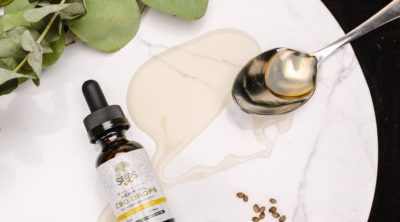
Royal jelly is a milky-white secretion that is produced by the hypopharyngeal gland of the young worker bees. This Buzzle write-up provides information on the health benefits and side effects of royal jelly.
A Taste of Royalty
The queen bee is fed royal jelly throughout her life, which is believed to be instrumental in the development of her reproductive organs and other attributes. While the queen bee can live as long as 7 years, the worker bees have a short life span of 3-4 months.
A honey bee colony comprises three types of adult bees: Queen bee (the only sexually developed female), worker bees, and drones (males). If an adequate amount of pheromone is not produced by the mandibular glands of the queen bee, the worker bees commence the process of supersedure, which refers to the process of the replacement of the existing queen with a new one. The queen lays eggs in a few queen cells. The larvae are fed with royal jelly, which is a secretion produced by the hypopharyngeal glands of the young worker bees. Once the first queen emerges, the other cells would be destroyed. In the event of the death of the queen, the worker bees reconstruct such specialized queen cells, keeping the larvae that are younger than three days within. All the larvae are fed with large amounts of royal jelly in the first two days. Thereafter, worker larvae feed on honey, pollen, and water, whereas the larvae that are selected to become queens continue to feed on royal jelly.
It is believed that it is the royal jelly that induces hormonal changes and biochemical processes that are responsible for the metamorphosis of a normal worker bee into a queen bee. While the queen bee develops reproductive organs, the worker bees develop strong mandibles, pollen baskets, wax glands, and brood food glands that help them carry out their functions. The queen is fed with royal jelly throughout her life, as she is the only bee with fully developed ovaries. She mates with many male (drone) bees, and lays up to 2,000 eggs per day.
Uses and Health Benefits of Royal Jelly
Also called by other names such as honey bee milk, bee saliva, and royal bee jelly, the royal jelly has long been used in Chinese medicine due to its therapeutic benefits. It is undoubtedly packed with nutrients. According to the Food and Agriculture Organization of the United Nations, a component called lO-hydroxydecanoic acid is responsible for its antimicrobial activity against Salmonella, Escherichia coli, and Staphylococcus. It is sold as dietary supplements and can also be consumed or applied topically. It contains the following:
➠ Royalactin
➠ Sugars (Fructose and glucose)
➠ Lipids
➠ Essential fatty acids
➠ Mineral salts
➠ Glycoproteins
➠ Free amino acids
➠ Peptides
➠ Water
➠ Enzymes
➠ Minerals (Potassium, sodium, iron, manganese)
➠ Vitamins (Vitamin B5, B6, C)
Royal jelly might help alleviate the symptoms of certain conditions due to its anti-inflammatory and antimicrobial properties. It must be noted that there’s a lack of scientific data to substantiate various claims that have been made regarding its therapeutic value. However, a few animal studies, as well as tests conducted on humans suggest the following:
Anti-aging Effects on the Skin
Royal jelly is often used as an ingredient in cosmetic products such as creams and lotions. It acts as an emollient. The topical application of this product might help reduce the signs of premature aging. It is believed that the presence of antioxidants can help prevent or even reverse the damage caused by free radicals to some extent. It makes the skin supple, and might protect the skin from pigmentation due to the damaging effects of the ultraviolet rays of the sun. It might reduce spots, fine lines, and wrinkles to some extent. It is believed that it might speed up the process of wound healing due to its anti-inflammatory properties. In a study conducted on rats (Fujii et al.), its use was linked to the accelerated healing of skin lesions.
Immune-boosting Effects
It is believed that the consumption of fresh royal jelly or its supplements might help strengthen one’s immune system. Such an effect is linked to the presence of antioxidants and various nutrients in this bee product. In a study conducted on mice that were genetically predisposed to an autoimmune disease (a condition in which the immune system mistakenly targets the body’s own cells or tissues) called lupus, the supplementation of royal jelly was believed to be linked to the delay in the development of lupus. Though it cannot be said that this product will have the same effect on humans, it does point towards its immune-boosting properties. It is believed to promote longevity and vitality.
Effects on Cholesterol
There have been certain animal studies that indicated the cholesterol-lowering effect of royal jelly. The reduction in the blood plasma levels of cholesterol and triglycerides was observed in rabbits (Cho, 1977). In another study conducted on rabbits, a reduction in the cholesterol and cholesterol deposits in the arteries was observed, when these disorders were induced experimentally (Carli et al., 1975) or the animals were on a diet that caused very high levels of cholesterol in the blood (Nakajin et al., 1982). In a paper published in 1995 (Vittek J.), the consumption of 50-100 mg of royal jelly by people affected by hyperlipidemia, revealed a 10% reduction in the total serum lipids, and a 14% reduction in cholesterol. However, due to the limited research and scientific evidence, the cholesterol-lowering effect cannot be confirmed in humans.
Effects on Fertility
It is undoubtedly the effect of royal jelly on the bee larvae that prompted many to believe that the same effect might be achieved in case of humans. It has been observed that the combination of flower pollen and royal jelly for about three months reduced the symptoms of menopause to some extent. Though some women who were taking a combination of bee pollen extract, royal jelly, and bee pollen pistil extract reported that it helped in alleviating certain symptoms of premenstrual syndrome to some extent, extensive studies need to be conducted to substantiate such claims.
Other Claimed Benefits
In general, several claims have been made by the manufacturers regarding its beneficial effect in the treatment of the following conditions:
➠ Anemia
➠ Anorexia
➠ Anxiety
➠ Asthma
➠ Cold sores
➠ Diabetes
➠ Eczema
➠ Endometriosis
➠ Insomnia
➠ Ulcers
➠ Liver disease
➠ Graves’ disease
It must be noted that most of these claims are based on preliminary research, and these need to be substantiated with scientific evidence.
Side Effects
Royal jelly is considered to be safe for most individuals. However, it should be avoided by those who are:
➠ Allergic to bee pollen, bee stings, honey, or other bee products
➠ Often affected by allergies
➠ Affected by dermatitis
➠ Pregnant or breastfeeding
➠ Taking blood thinners such as warfarin
Thus, royal jelly is more likely to cause side effects in people with a history of atopy, asthma, or allergies. In rare cases, it can cause a severe allergic reaction that might be characterized by rashes and swelling of the face or throat. There have been reports of worsening of dermatitis on topical application of royal jelly.
On a concluding note, extensive research needs to be conducted to prove the health benefits of royal jelly. However, this product can be taken as a general health tonic, unless it is contraindicated. It can be safely taken by those who don’t have a history of allergies or asthma. Though it is available in the form of dietary supplements, it is believed that consuming it fresh is a better option. Take it as per the dosage given on the label, or consult your healthcare provider regarding the dosage.
Disclaimer: The information provided in this article is solely for educating the reader. It is not intended to be a substitute for the advice of a medical expert.


